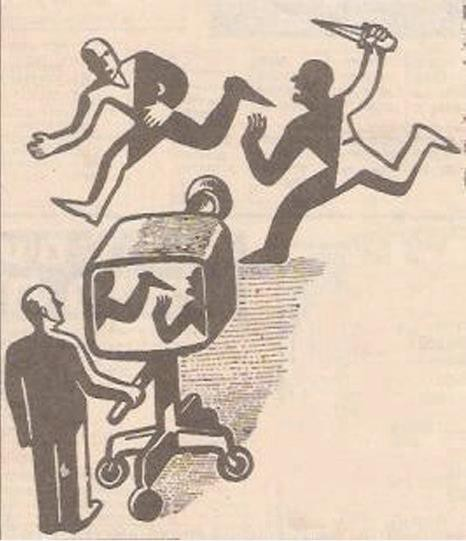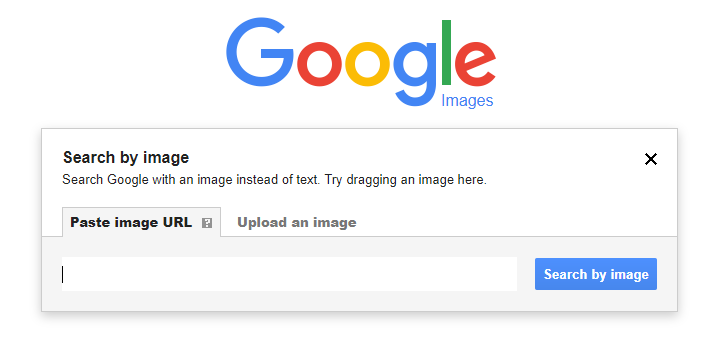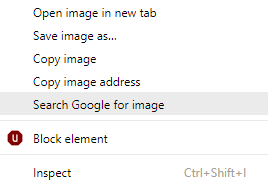The Field Guide to Spotting Fake News in the Wild
Fake news is a ridiculously profitable industry.
Why?
Because the margins are incredible! You don’t need a team of well-connected journalists spending too much time fact checking before publishing. You don’t need highly-paid editors ensuring compliance to basic morality and media ethics. And you certainly don’t need to bother with quality over quantity.
All you need is a simple blog/website, a Facebook page or Twitter account to distribute and promote your articles, and a bunch of pseudo-journalists blessed with a fake-news-writing ability. An ability that is quite easy to develop.

Everyone was once a child with a vivid imagination, right? So if you’ve still got a little bit of that imagination in you and you’ve lied at least a few times in your life, then you too can take an event that actually took place, exaggerate the details, sprinkle a few lies here and there, misquote the sources, add more “credible sources”, and finally top it off with a sensationalistic Can-You-Believe-This-Happened headline.
Repeat this for a couple of dozen articles and soon you’ll be attracting thousands of clicks, and thousands of eyeballs on those ads littered across your website. Each click will be a cha-ching in your bank account.
Conning Generations of Internet Users
While it sounds absolutely absurd and it should be very simple to see right through a piece of fake news for what it really is, it’s insane how many of us are so easily conned into believing something that just isn’t true.
For instance, does your mom or dad use an instant messaging app like WhatsApp? If so, go take a look (with permission of course) at what they’re sharing and what they’re receiving from your aunties and uncles. I bet you that somewhere in the cluster of messages there’ll be an old wives’ tale being passed off as a revolutionary medical breakthrough that doctors despise because it means patients don’t have to be treated by them anymore.
I think we can forgive our older generation though, because many of them (especially in developing countries) may be new to the room-full-of-cobwebs that we call the internet.
But how do we excuse the hundreds of thousands of digital natives of our generation and the generations after us who grew up well aware of the presence of misinformation online and yet are still fooled by blatant nonsense?
What ever happened to the old saying, “Don’t believe everything you read online”?
Fake News = Unnecessary Outbursts
Your older cousin trying to rub a baked potato on your face as a cure for your acne because a video on www.acnegoneinaday.zimbabwe told her to do so, should be the least of your worries.
Fake news, created with an agenda, can spread like wildfire, drastically shifting perceptions, worsening tensions between communities, races, and religions, and possibly even resulting in outrage and violence.
Just recently in India, a still image from a Hindi movie of a man forcibly pulling a woman’s saree made its rounds on social media after it was falsely described as a picture of a Muslim man harassing a Hindu woman. A video of unknown origin falsely described as depicting two Muslim police officers beating up a Hindu man went viral as well. An old image from 2002 of the riots in Gujarat was falsely described as a photograph taken during the recent riots in West Bengal and used as a propaganda piece by politicians to call for more protests. Each piece of fake news intensified communal tension in the already unstable West Bengal.
Last year a photo of Syrian children who died during a chemical attack was falsely described by fake news websites as a photo of children who had had their organs harvested by Thai kidnappers and organ traffickers.
Remember the story about Donald Trump signing a $110 billion arms deal with Saudi Arabia on his recent visit to the Middle East? Even mainstream news outlets carried the story. CNBC. The Independent. The Hill. Al Jazeera. Probably because Sean Spicer, the (former) White House Press Secretary, announced it. However, upon closer examination, a researcher at Brookings Institute discovered that there is no deal; there are only letters of interest and intent. The $110 billion arms deal story that led to so much outrage is allegedly a piece of fake news!

This is probably a more harder-to-detect example of fake news. It took a seasoned researcher with contacts in the arms industry to detect it.
So do we, the average joes, stand a chance?
Perhaps not when it comes to complex and specific matters such as international arms agreements but in many other cases, yes. Just like the best antivirus for your computer is your common sense (don’t click on any of those suspicious links!), the best tool to use when determining the validity of a story is your own brain.
Remember, as netizens with the power to share to thousands who may go on to share to millions, you have a great responsibility to ensure that what you’re sharing is 100% accurate.
If it’s even 0.0001% short of 100%, you should think twice about clicking that share button.
Here’s how to turn foolish trust into educated skepticism.
Summon Your Inner Robot
Don’t let your emotions take advantage of you when you’re consuming a piece of content. Much of the news today is created to elicit shock, anger, frustration or sadness, sometimes just by the headline itself. It’s the oldest trick in the book to drive traffic to a website to earn more ad dollars.
So once you’ve read, watched, or listened to something, don’t give in to your finger just twitching to forward it to someone else. Turn on the rational part of your brain and walk that piece of content through this list.
1) Does the web address (URL) seem very similar to the web address of an established news provider?
Is it bbc.co.uk or bbbc.co.uk? Is it dailymirror.lk or dailymiror.lk? Is it cnn.com or cnn.co?

If it’s the latter in any of the above cases, then your internal fake news detection device should be dinging. Especially if the design of the fake news website is very similar (in terms of the logo, colours, layout or font) to the website of the established news provider it’s trying to impersonate.
2) Check the sources and then double-check the sources!
Does the content piece contain any sources or references? If not, be suspicious. If it states “anonymous sources have revealed…”, be suspicious anyway.
If the item-in-question has quoted someone in a particular position at a particular institution, use Google to check if that person exists, if that position exists and if that institution exists.
Even if all of the above exists, it won’t hurt to look for an official statement or press release by that person or institution. It is possible that their statements have been misquoted or taken out of context to make the news piece more sensational.
3) Have any mainstream media outlets covered the story yet?
Capture the gist of the video or article in as few words as possible and Google it. See if any credible mainstream media outlets (either internationally or locally) have covered the story.
A large number of mainstream outlets carrying the story is a good sign. Although be warned, the details of the story may be very different to what you’ve seen on non-mainstream media. So it’ll be wise to go beyond the headline to reading the article or watching the video before jumping to any conclusions.
4) In the case of a questionable photograph, use Google’s reverse image search.
If a news piece is centered around a photograph, then use Google’s reverse image search to see if the photo is really what the caption associated with it makes it seem to be.
Either download the photo or copy the URL of the photo by right-clicking it and selecting “Copy image address”. Then head over to images.google.com, click the little camera icon which will enable reverse image search and upload the image or paste the URL.

If you’re using Google Chrome, you can simply right-click on an image and select “Search Google for image.”

If the results show the same photograph being used in an unrelated context, then you have every reason to be suspicious.
5) Check with the veteran warriors against fake news — Snopes and Hoax-Slayer.
Snopes.com and hoax-slayer.com have been engaged in the battle against old wives’ tales, internet scams, and fake news since the rise of the internet. They use meticulous research to determine if a story is entirely true, entirely false or contains some truth to it.
The easiest way to search through Snopes or Hoax-Slayer for a story you want to verify is by copying a line from the article (or summarizing the gist of the video), pasting it on the Google search bar, and adding “snopes” or “hoax-slayer” after it before hitting the search button.
6) What’s the other content like?
If it’s a website, take a look at some of the other content pieces. If it’s a YouTube channel, take a look at some of the other videos. If it’s a Twitter account, take a look at some of the other tweets.

If any of the other content seems overly sensational, has misleading headlines, or are completely unsubstantiated, then let your doubts arise.
7) Who has written the article and what else has s/he written?
Check the by-line! It’s either right after the headline or at the bottom of the article.
Google the name to see if that person actually exists. Most of the time you can also click on the person’s name to see a list of articles s/he has contributed to the website. If any of them seem fishy to you, by a rule of thumb, I would advise against believing anything s/he has to say without proper evidence.
The absence of a by-line doesn’t always mean the news item is fake. The BBC for instance doesn’t have a by-line on their online articles. However the BBC is a world renowned media organization with a long-standing history of a high degree of credibility. Something many non-mainstream media outlets don’t possess. So the absence of a by-line on the website of a non-mainstream outlet should raise your suspicions.
8) Don’t be that guy.
Do you know what that guy does? He reads only the headline and creates his own biased story in his head. He doesn’t know that most media outlets use sensational headlines to attract clicks so he doesn’t bother reading the article.
That guy also doesn’t check the date of the article. He’ll share an old story and act like it just happened.
That guy takes everything too seriously. He doesn’t know how to tell satirical articles from serious articles. A that guy is probably a heckler at a stand-up comedy show.
If after all of this, you’re still not sure if a story is true or false, then check with a friend. Ideally a friend who doesn’t wear a tinfoil hat and believe every conspiracy theory in the world.
And remember, you should always check to see if a news item is fake regardless of who shared it with you, how educated they are, and what they do. It doesn’t matter if it’s your uncle who’s a nuclear scientist; even nuclear scientists can give in to their emotions and share without fact-checking.
Stop the Avalanche
This list is definitely not fool-proof. It’s possible that a piece of content can pass through every test and still end up being fake. But it does pay to squint your eyes, move your head to the side and be skeptical.
We need to hold our media outlets to a higher standard, even the ones we consider mainstream. We need to demand evidence, credible sources, and the entire unbiased picture, while taking responsibility for reading the entire story, comprehending it, and not letting our personal biases or prejudices get in the way.
It is our collective responsibility to prevent the spread of fake news and in turn prevent the outbursts that fake news has a tendency to generate.
As the brightest minds in social media and Google continue to tackle this problem with improved algorithms, new tools, and stricter regulations, they still have a long way to go.
Fake news and its creators will always find a way to wriggle in, but we can stop giving them the pedestal that they do not deserve by thinking twice before we click “Share”.
After all, it only takes one snowflake to start an avalanche.
Other References
How to Spot Fake News (International Federation of Library Associations and Institutions, 2017)